Civil War Nurse and Humanatarian
Sallie Chapman Gordon Law was the first recorded Confederate nurse in the American Civil War. She was the president of the Southern Mothers’ Association, a group of women from the Second Presbyterian Church in Memphis, Tennessee. She gave of herself without compensation or reimbursement of expenses.

Early Years
Sallie Chapman Gordon was born August 27, 1805 in Wilkes County, North Carolina. Nothing is known of her early education, but she often exhibited evidence that it was thorough. On June 28, 1825 she married Dr. John Sandiford Law in Eatonton, Georgia, and they made their home in Forsyth, Georgia, where Law practiced medicine until 1834. They had seven daughters and one son, John Gordon Law, who became a Confederate soldier.
In 1834 they moved to Columbia, Tennessee, where Dr. Law continued his practice until his death in 1843. After her husband’s death, Sallie Law moved to Memphis because it offered better facilities for the education of her children.
Civil War
The approaching Civil War stirred her to half a century of activity and service to humanity. Her sympathies were with the Confederacy, and she bemoaned the fact that she had “only one son [John Gordon] to lend to the Confederate Armies.” Anticipating that there would be instances in which she might be of service, she began to seek out opportunities.
Sallie Law Chapman Gordon wrote a sixteen-page pamphlet entitled Reminiscences of the War of the Sixties between the North and the South (1892) in which she recorded her activities for a period of thirty years. Excerpt from that pamphlet:
The Civil War had hardly begun when many of the ladies of Memphis met at the house of Mrs. Miles Owen to make up uniforms for their boys, husbands and brothers.
To meet the needs of the “sick Confederate boys” in April 1861, the Memphis ladies first organized in Mrs. Leroy Pope’s house and later set up twelve beds in Mrs. W. B. Greenlaw’s house. Soon they moved again to Court Square on Irving, “at one time we had three hundred measles patients. … Our Southern Mothers’ Hospital in the Irving block was then moved to the Overton Hospital…”
Southern Mothers’ Hospital
Sallie Law’s first project was the establishment in April 1861 of the Southern Mothers’ Hospital in Memphis for the treatment of the wounded. With constant expansion, the hospital proved to be of outstanding service following the Battle of Shiloh. She wrote in her pamphlet:
Early in April, 1861, a call was made by Mrs. Leroy Pope for the ladies of Memphis to meet at her house to care for the sick Confederate soldiers passing through Memphis. Many patriotic women responded to that call. We met in the parlors of Mrs. Pope [where they set up twelve beds] and organized the Southern Mothers’ Hospital. We opened our hospital in rooms offered by Mrs. IV. B. Greenlaw on Second Street, which grew from twelve beds into the care of thousands, nursed and fed gratuitously in the Southern Mothers’ Hospital.
Those rooms becoming too small for the number of patients we moved to Irving block on Court Square, where at one time we had three hundred measles patients. … Boat loads of the [Battle of] Belmont (November 7, 1861) wounded were sent to the hospitals at Memphis. Our Southern Mothers’ Hospital was then moved to the Overton Hospital, where we all nursed and worked together, not only our own dear, wounded soldiers, but many Federal prisoners, nursed with the same care, and receiving the same in treatment as our own soldiers.
Article from the Memphis Daily Appeal August 9, 1861 about the relocation of the Southern Mothers Hospital:
By the generous kindness of Mr. Norton, the proprietor of the Irving block, Court square, the hospital of the Southern Mother’s institution has been removed to the north building of the block, freely placed at their service by Mr. Norton. The rooms are numerous and large, admitting of free ventilation, and adapted for comfort. A hundred beds will be provided, and in case it is needed the whole of the upper story can be occupied, greatly increasing the amount of accommodations. As patients become convalescent, or in cases where such a step is deemed desirable, they will be taken into the private houses of the members and attended by their host’s family physician.
In the basement every accommodation required is provided for cooking. On the third story four fine rooms, quiet and retired will be reserved for cases requiring extra attention. The number of patients last night was eleven in the hospital and five at the residences of members. The association is performing its great and good work without expense to the State or to the Government. The assiduous attentions and skill of Dr. Curry have received deserved encomium from the military board.
First Battle of Memphis
The First Battle of Memphis was a naval battle fought on the Mississippi immediately above the city of Memphis on June 6, 1862, during the American Civil War. Citizens of Memphis gathered atop the bluffs above the Mississippi River in the early morning of June 6, 1862 to see the Confederate River Defense Fleet as it steamed out into the river to meet the Union Gunboat Fleet. The Confederate fleet was comprised of eight converted wooden paddlewheel steamboats – Colonel Lovell, General Beauregard, General Bragg, General M. Jeff Thompson, General Price, and General Van Dorn, Little Rebel, and Sumter – armed with a total of eighteen cannon. The Union fleet – Benton, Cairo, Carondelet, Cincinnati, Louisville, Mound City, Pittsburgh, and St. Louis – carried seventy-nine cannon and was clad with iron plating.
At 5:30 a.m. the fleets engaged in a long-range cannon duel for ninety minutes with little effect. Two Union rams soon joined the action – the Monarch and the Queen of the West. The latter sank the Colonel Lovell but was rammed by the General Beauregard. The citizens’ excitement turned to gloom as the Union fleet knocked the Confederate ships out of action one by one. The raging battle soon came to a close with three Confederate ships sunk, three grounded, one captured, and one escaped. On the Union side, one ram was run aground and another heavily damaged; the rest of the fleet suffered damage, but all other ships remained afloat.
Confederate troops had previously been ordered away to Corinth, Mississippi, leaving Memphis defenseless. Mayor John Park refused to surrender but conceded that he was powerless to prevent the city’s fall. The loss of Memphis, the Confederacy’s fifth-largest city and site of a naval manufacturing yard now opened West Tennessee to federal occupation.
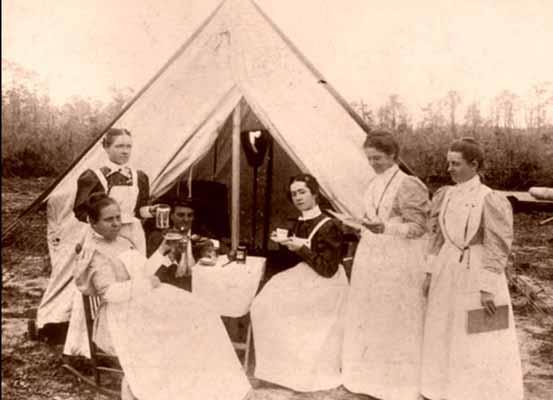
Union Occupation
After the Battle of Memphis, Union troops under the command of General William Tecumseh Sherman occupied Memphis and ordered disloyal establishments closed. Thousands of impoverished families, runaway slaves, and loyal Unionists moved into the city seeking the protection of the Union Army.
Southern Mothers’ Hospital was one of the institutions that were closed, and its assets were invested in medical supplies, bedding, and clothing. Sallie Law carried supplies wherever she found the most need. She personally delivered to hospitals in many places including LaGrange, Georgia with food and clothing for the soldiers.
On a trip to Columbus, Georgia, she heard of the terrible condition of the soldiers in General Joseph E. Johnston‘s division in Dalton, Georgia. After she had made a second needed shipment for Johnston’s troops, the general arranged dinner celebrations and “a parade of thirty thousand brave, tattered troops” in honor of the aid she brought to his men.
Mother of the Confederacy
For all of her unselfish services, she was adored by soldiers during the war. They knew how she had dedicated herself to the work without compensation or reimbursement of expenses. It was they who early referred to her as ‘Mother of the Confederacy’ and that designation began to be repeated across the country.
Late Years
After the war ended, Sallie Chapman Gordon Law helped establish the Southern Mothers’ Association. In May 1889 that group formed the nucleus of the Confederate Historical Association, which numbered Jefferson Davis among its early members. This memorial association “helped erect monuments, mark graves, and distribute historical data about the Southern cause and its conduct.” Sallie was the only president of this group during her lifetime.
After the war she strove to comfort the vanquished and encourage the down-hearted, and continued in her way to do much good work.
Sallie Chapman Gordon Law died June 28, 1894 at her home in Idlewild, a suburb of Memphis, Tennessee.
SOURCES
Wikipedia: First Battle of Memphis
NCPedia: Sallie Chapman Gordon Law
Wikipedia: Sallie Chapman Gordon Law
Reminiscences of the War of the Sixties Between the North and South – PDF
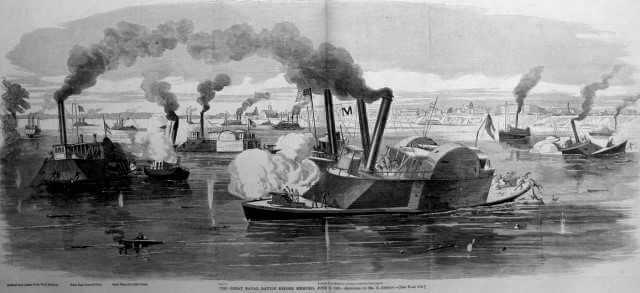
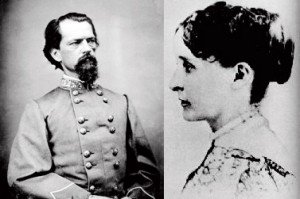
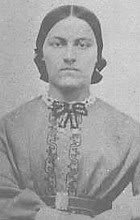
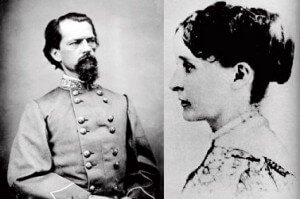

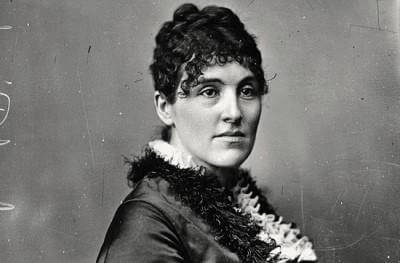
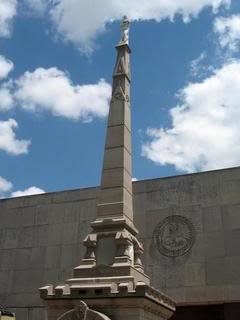
The image “group of nurses at a field hospital” is clearly not Civil War-era. A quick glance at their attire, hairstyles and equipment immediately shows them to be Spanish-American War-era, or possibly early WWI-era. The same erroneously-captioned image appears in North Carolina nursing histories.